TL;DR: Chinese USB adapters work out of the box
I’ve bought a new car charger because the old one was too big. The new one is made from aluminum to dissipate the heat better and doesn’t waste that much space.
It’s 2.26 USD including shipping on aliexpress. I’ve expected the electronics to be garbage as the one before but i was pleasantly surprised:
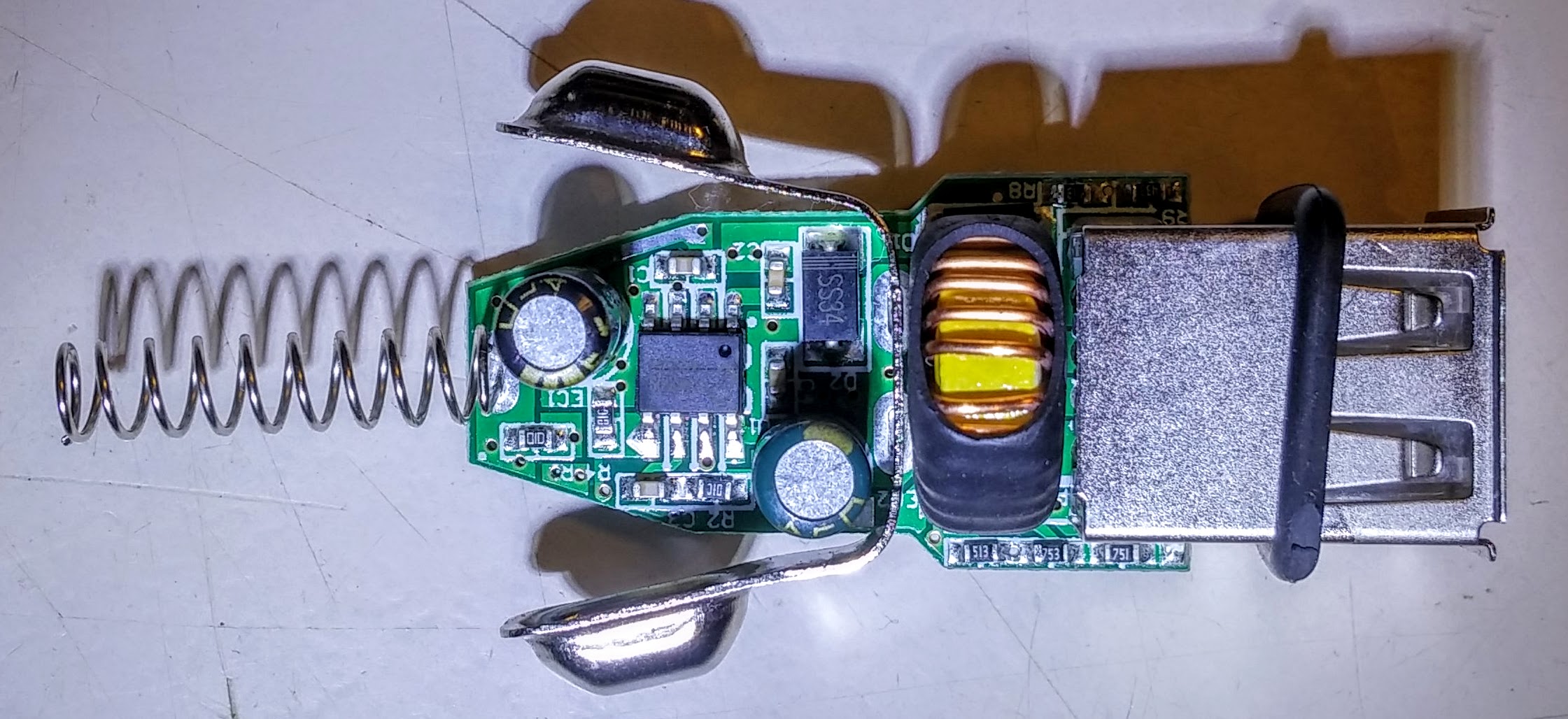

A double sided PCB with plenty of vias and a good layout. I’ve checked the switching node with my oscilloscope (no screenshot) and everything is rock solid and no ringing. I couldn’t have done it better myself.
The components are good as well:
- A beefy inductor
- 35V 47µF input capacitor
- two SS34 40V Schottky rectifiers
- CX8505 synchronous buck converter
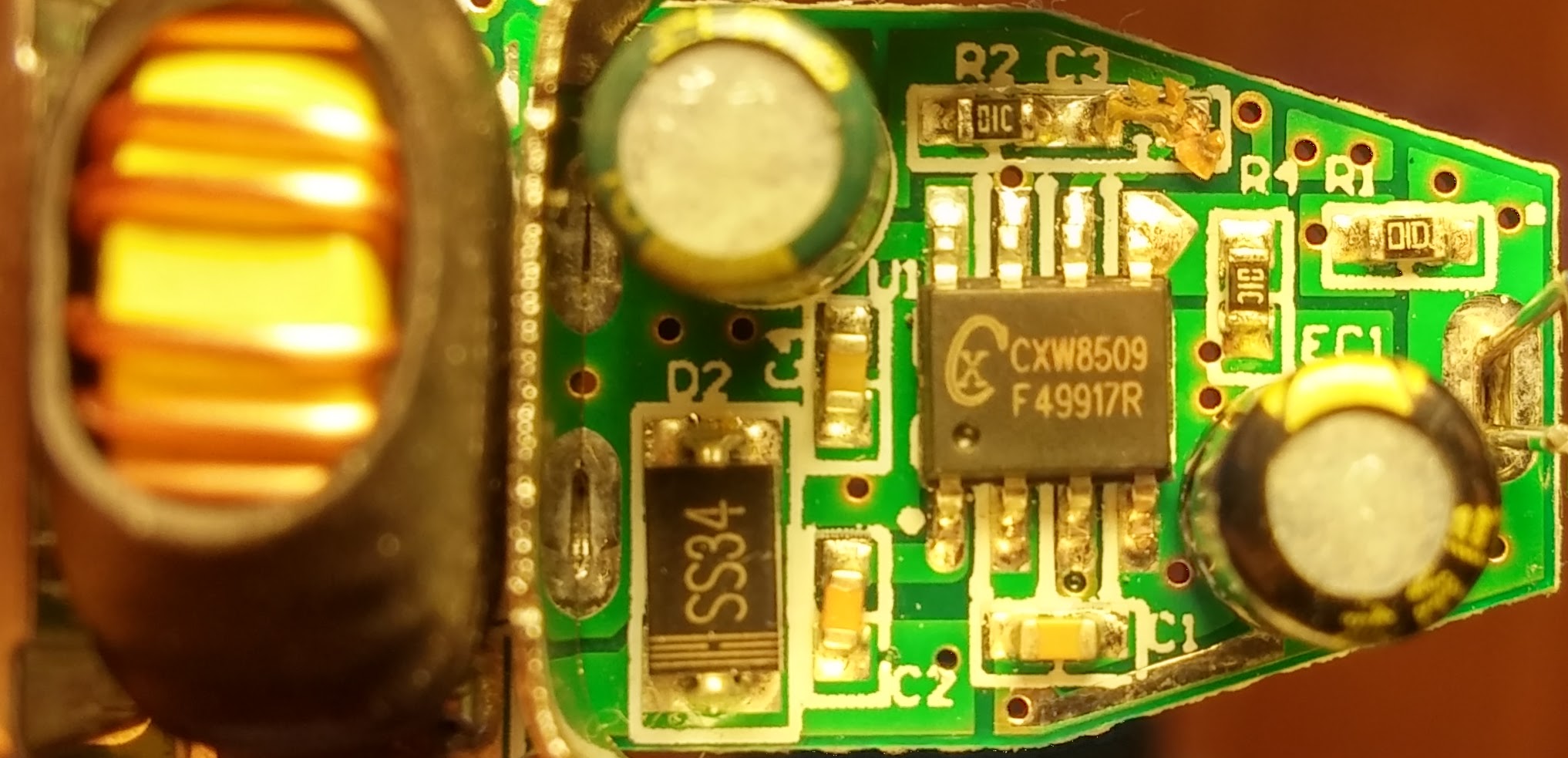
The buck converter is switching at 450kHz, can do 3A continuous, 4A peak and survives 30V of input voltage. The efficiency is up to 95%.
Modifications
This thing actually works. Unfortunately, it doesn’t match my car nor my phone.
Flexible tip
The solid tip doesn’t connect reliably to my car socket. It could be different with other models, but in mine, the socket’s bottom is just a piece of brass.
So I needed a flexible tip. For this i just drilled a hole in the old tip and used a screw as tip:
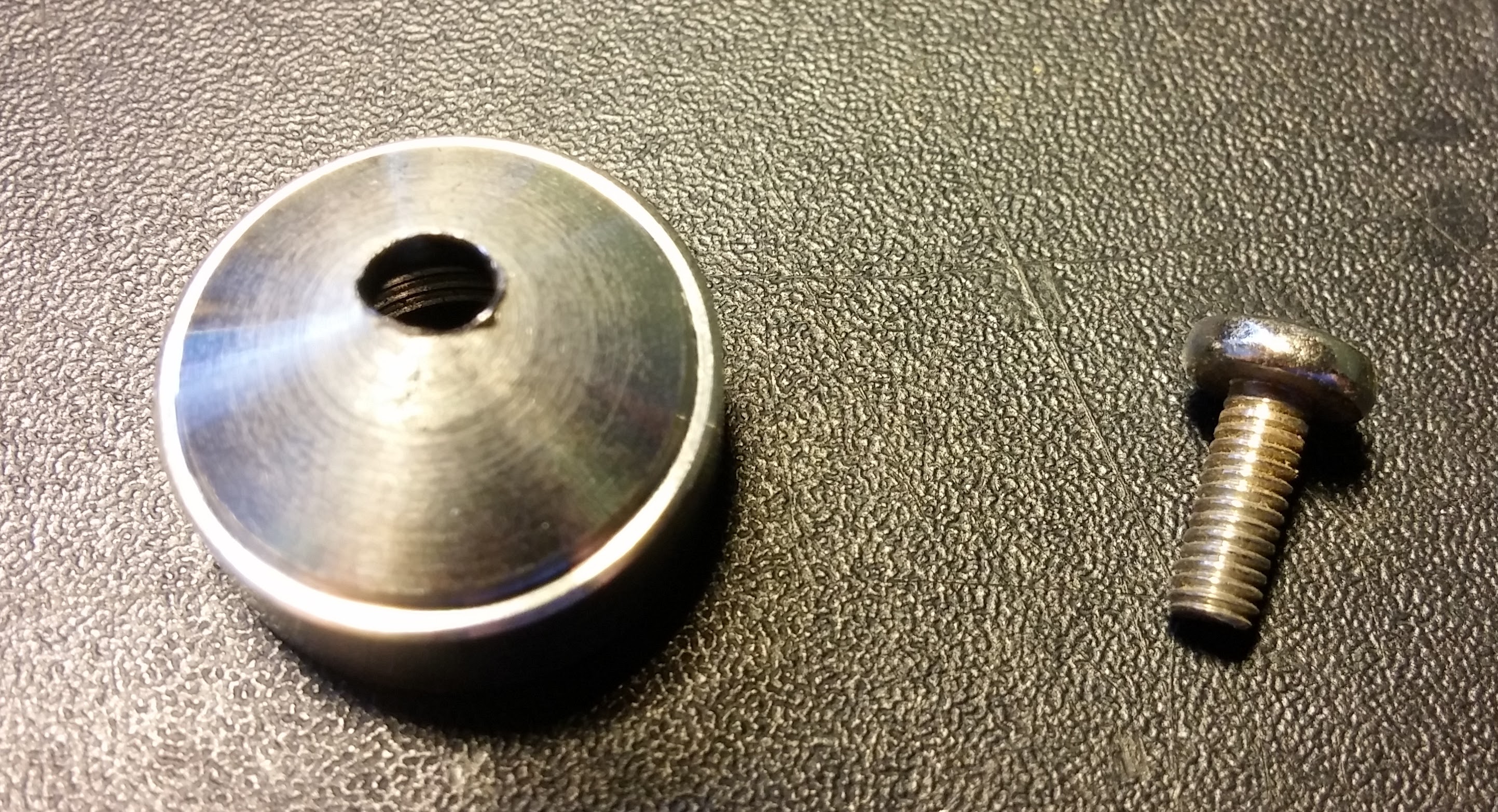
The screw is hold in place by the internal spring. The metal is formed conical on the inside so it takes some time until the drill grabs the material. And yes, the hole isn’t centered.
And it works perfectly:
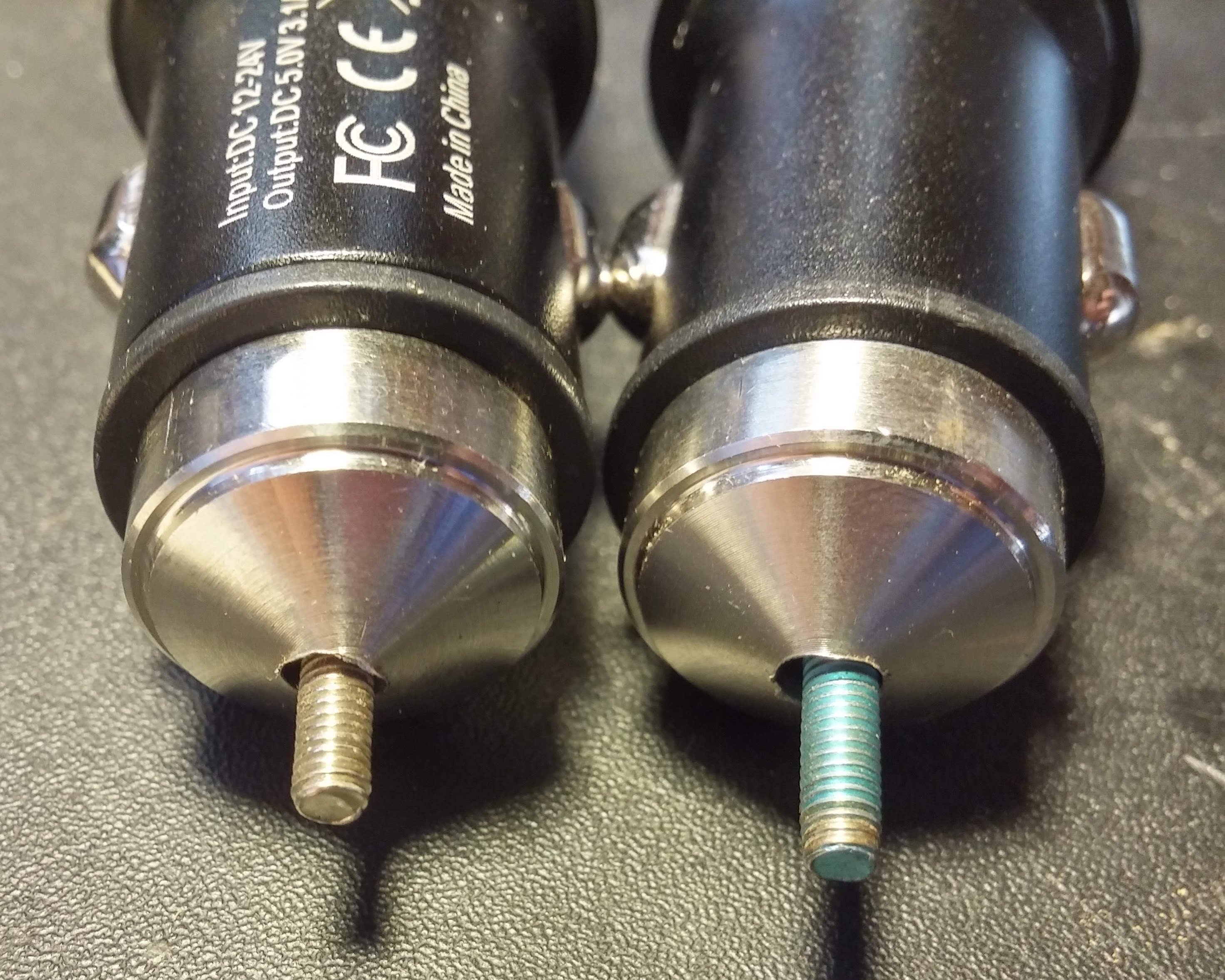
Fast charge encoding
This modification didn’t work. I soldered D+ and D- together because this should signal an AC-adapter to my Android phone:
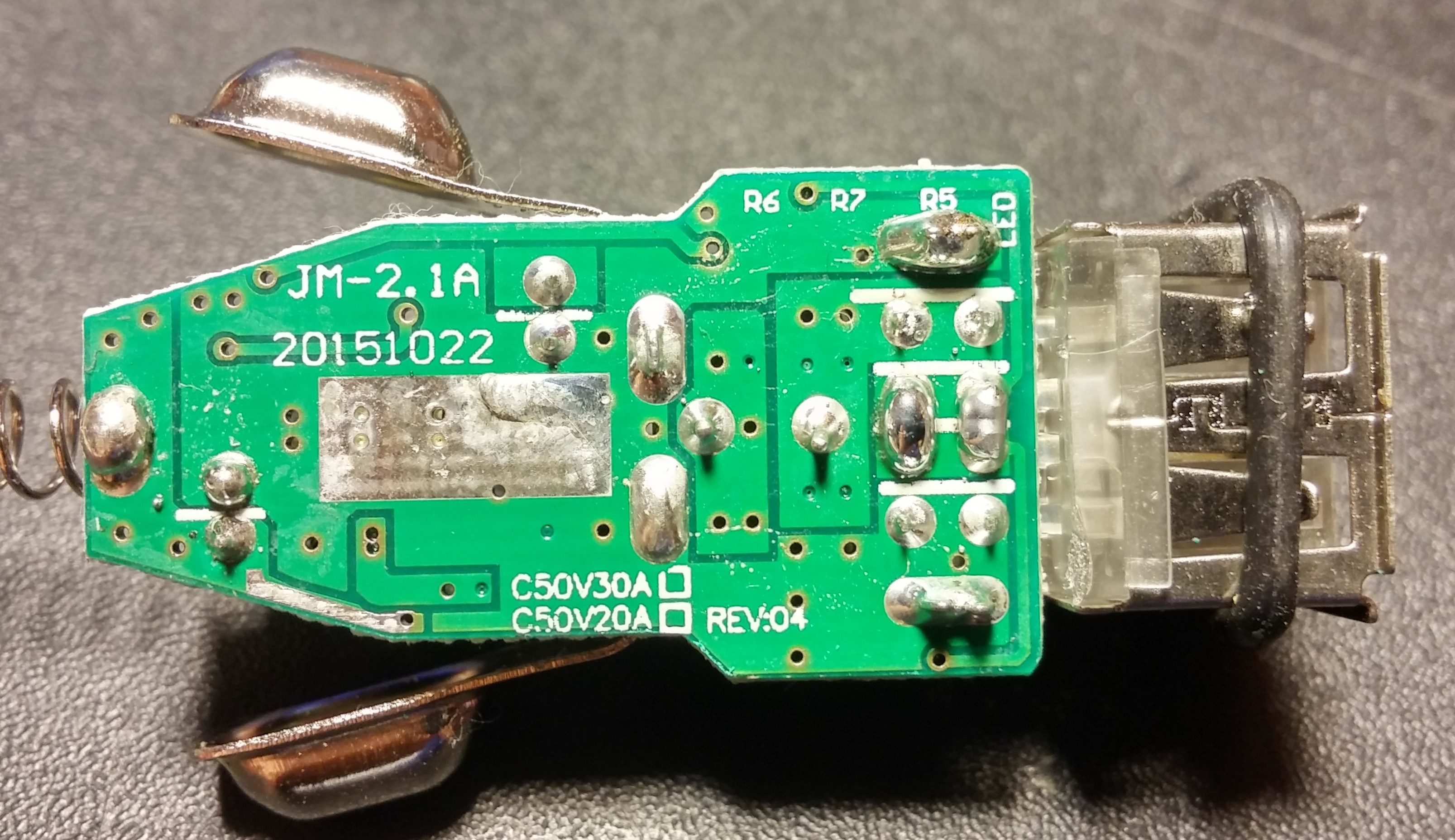
But it only charges at 850mA.
I’ve tried to hold D+ and D- at 2.0V with a voltage divider (use additional 50kΩ to ground). But the charging rate stays at 850mA, despite showing up as ‘AC-connected’ in the battery settings tab.
Manually enabling fast charge in the kernel steps up the charge rate to 1.8A.
So i will just enable fast charging in software until i learn how to properly encode the current rate over USB.
UPDATE: I discovered that my smartphone starts charging with more current after ca. 10s. The fast charge is just delayed a bit, everything works fine. I’ve checked this with a current meter and the “Ampere” app:
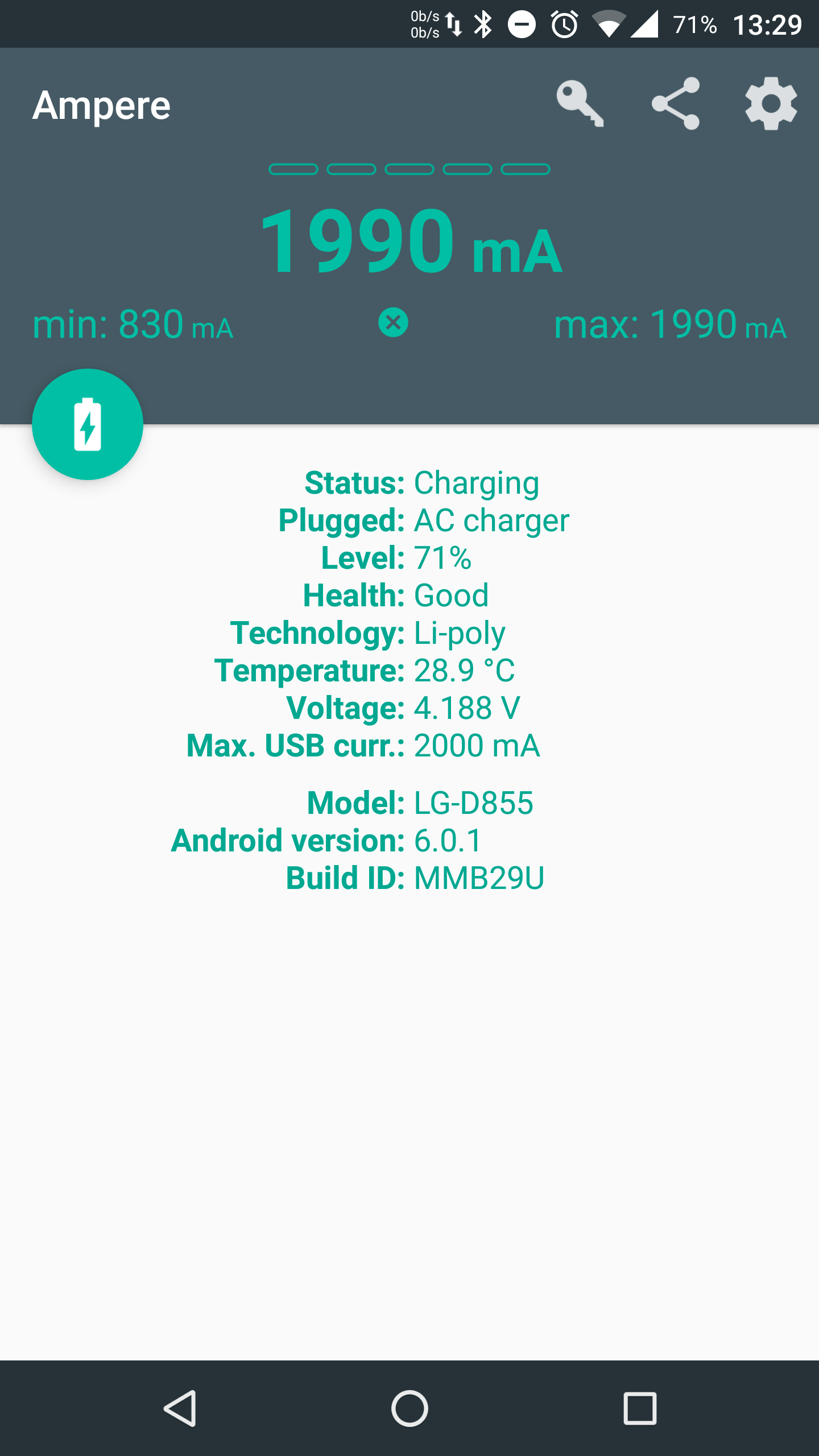
Temperature
I’ve used the charger with my phone pulling nearly 2A and a 0.75A battery bank for 10 minutes. The charging IC gets hot. My highly scientific method “put the finger on it and measure the seconds until you have to pull away” resulted in approximately 50°C. The PCB emits a healthy chinese electronics smell.
The switching node still doesn’t show any ringing or overshooting. The output is smooth.
Conclusion
These adapters (and the chinese engineers) have improved a lot. My first modified charger is now retired.